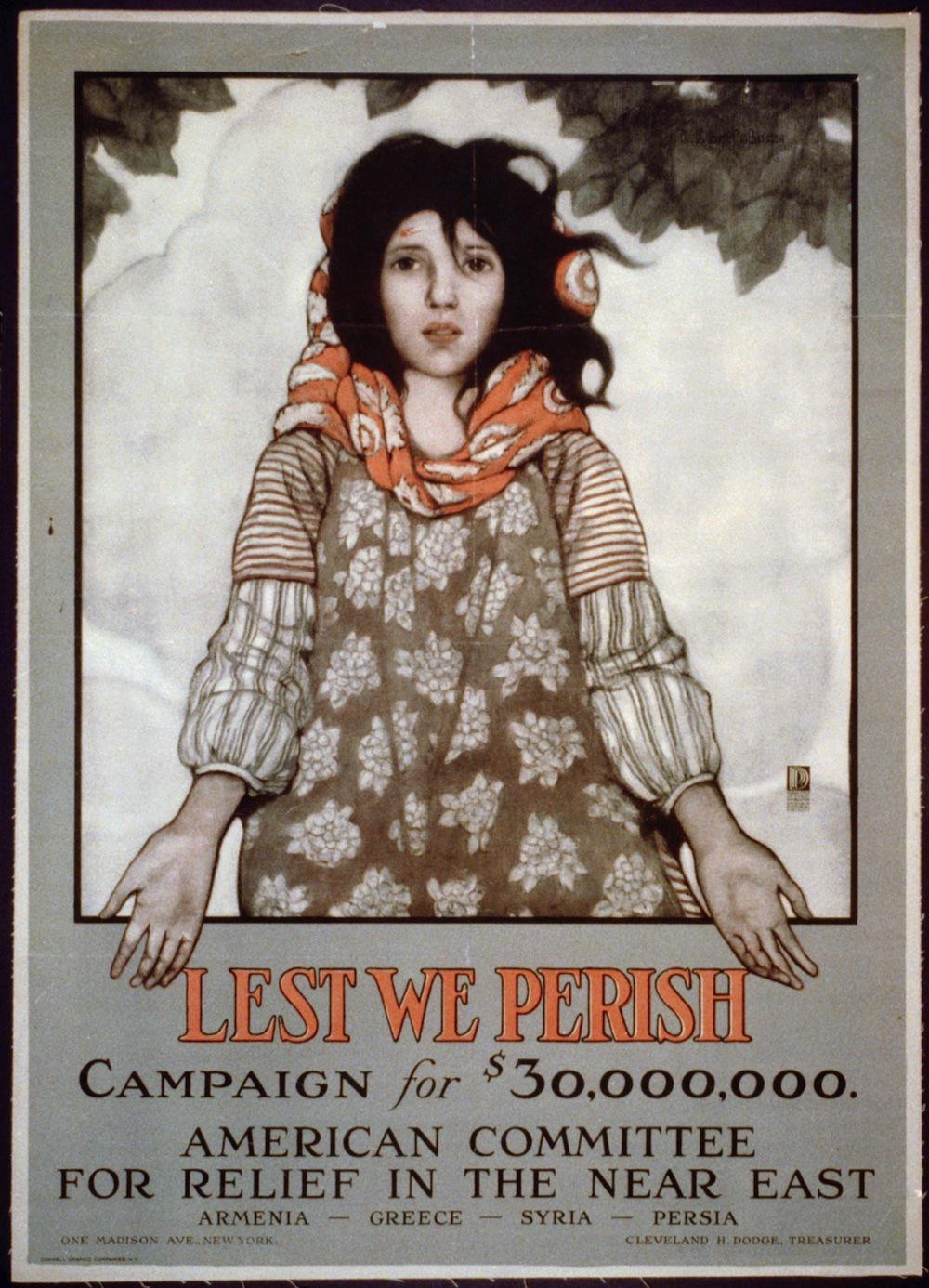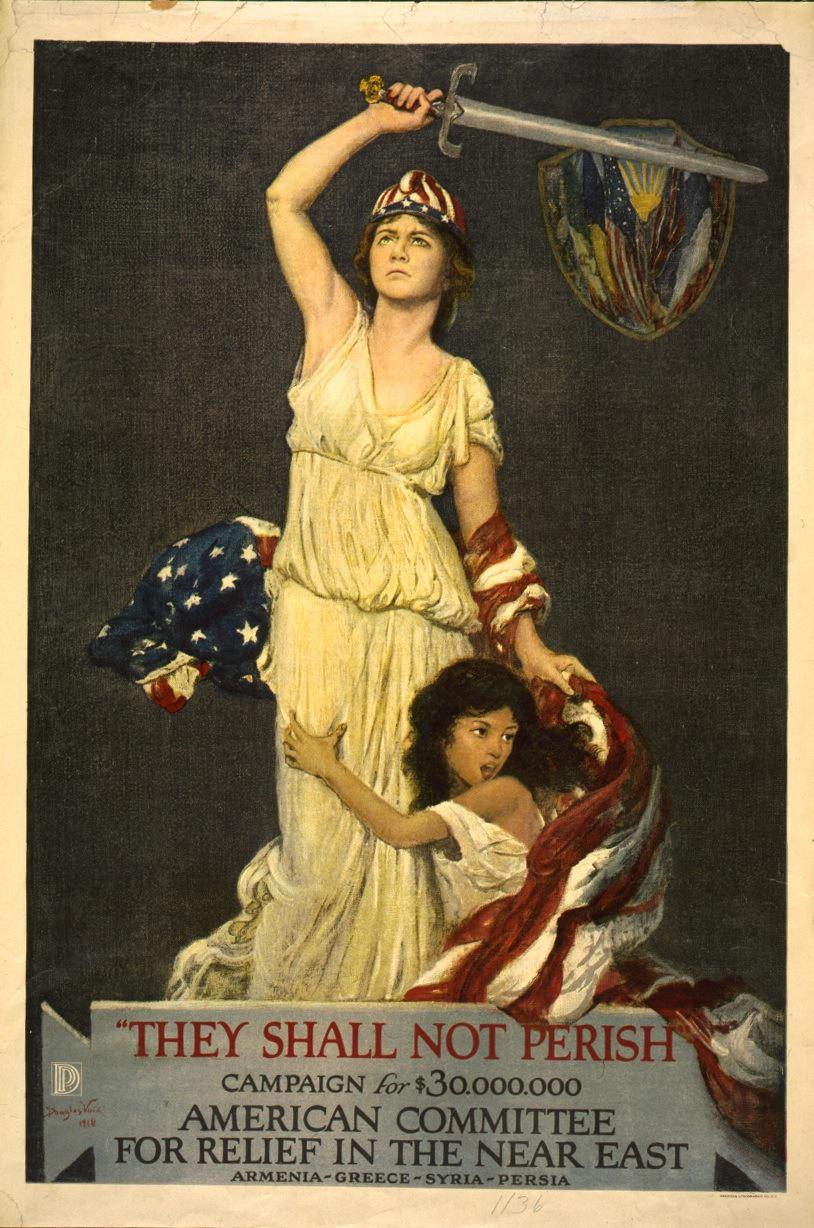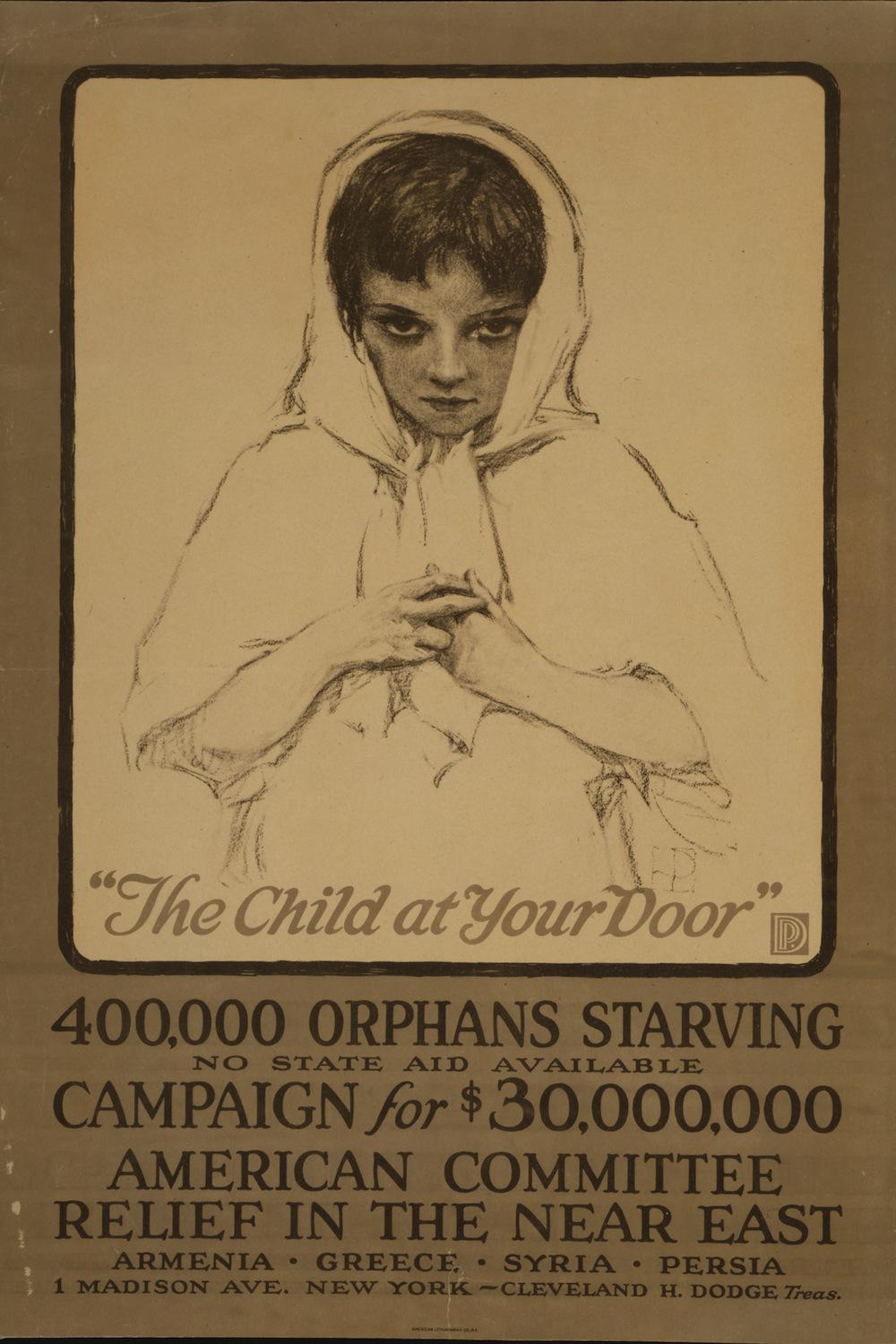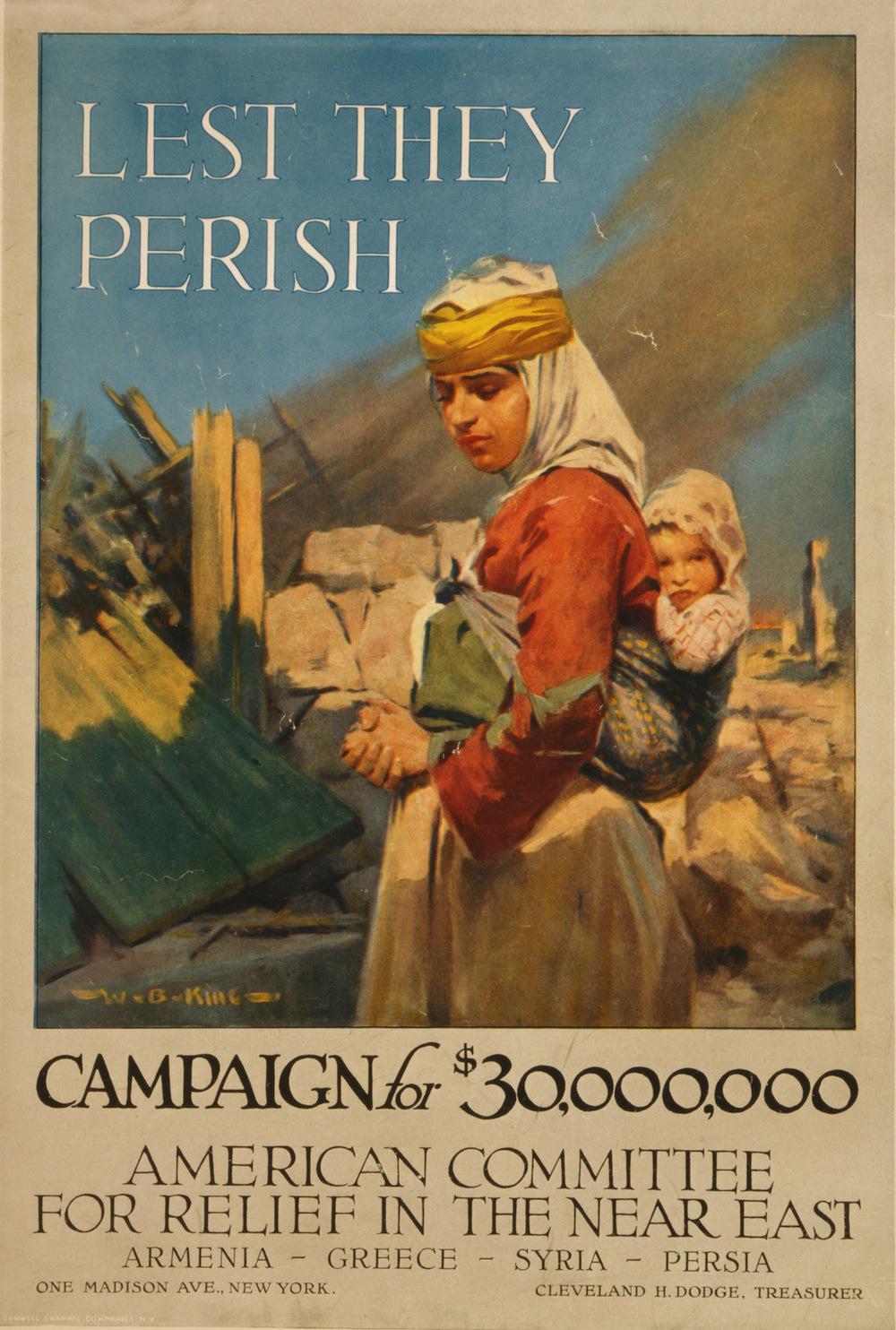The American Committee for Relief in the Near East, which put these posters in circulation in the last years of World War I, began in 1915 as the American Committee for Armenian and Syrian Relief and was formed as a humanitarian response to the Armenian genocide and the dissolution of the Ottoman Empire. As World War I developed, the group began to offer food and shelter to displaced people in Syria, Persia (now Iran), and Greece.
The American Committee for Relief in the Near East’s posters often used the image of a child, or a young woman, to appeal to passers-by. Throughout the war, Americans also donated to relief campaigns for Belgian and French children, and the image of hungry young people and frightened mothers came to symbolize the plight of civilians caught up in the war.
In Syria, after the war, shelters run by Near East Relief (which was renamed and granted a Congressional charter after the end of the war) housed 45,000 orphans. The organization operated these facilities until 1930, when the last war orphans aged out of the need for care.
In all, Americans donated $117 million to the organization’s Near East relief efforts between 1915 and 1930.
I first saw some of these posters on the Tumblr run by Special Collections, Archives, and Rare Books at the University of Missouri Libraries.

Library of Congress

Library of Congress

Library of Congress

Library of Congress

Library of Congress

Library of Congress